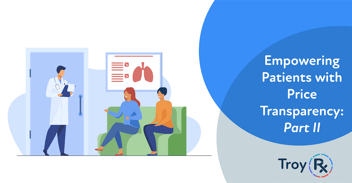تحسين سلامة المرضى مع التطورات الرقمية

في هذا الشهر، سيتعاون معهد تحسين الرعاية الصحية ومركز سلامة المرضى معًا للاحتفال بأسبوع التوعية بسلامة المرضى في الفترة من 13 إلى 19 مارس. ويهدف هذا الحدث التكريمي السنوي إلى التحفيز على العمل وزيادة الوعي والاعتراف بالعمل الذي تم إنجازه بالفعل فيما يتعلق بسلامة الرعاية الصحية.
لا يمكن التقليل من أهمية سلامة المرضى في بيئة الرعاية الصحية اليوم. ويستشهد المعهد الدولي للصحة والرعاية الصحية بدراسات تشير إلى حدوث ما يصل إلى 400,000 حالة وفاة في الولايات المتحدة كل عام بسبب الأخطاء الطبية، بل إن هناك المزيد من الإصابات التي يتم الإبلاغ عنها والمتعلقة بالأضرار التي يمكن الوقاية منها. ويصف المعهد منع الضرر في أماكن الرعاية الصحية بأنه "مصدر قلق للصحة العامة". وتدفع الحاجة إلى الحد من هذه الحوادث إلى أهمية أسبوع التوعية بسلامة المرضى. بالإضافة إلى ذلك، وبما أن كل شخص يحتاج إلى رعاية عالية الجودة في مرحلة ما من حياته، فإن المعهد الدولي للصحة العامة يريد أن يكون المرضى ومقدمو الرعاية الصحية على دراية تامة بطرق تعزيز سلامة المرضى في مجال الرعاية الصحية.
إن سلامة المرضى موضوع واسع النطاق ويشمل جهوداً متعددة لتحسين الرعاية الآمنة في جميع أنحاء الرعاية الصحية. تقوم المستشفيات بشكل متزايد بتنفيذ استراتيجيات لمعالجة سلامة المرضى لتوفير المال وتحسين الكفاءة وزيادة رضا المرضى في جميع المجالات. تعتمد العديد من هذه الجهود على زيادة استخدام التكنولوجيا لضمان سلامة المرضى أثناء تلقيهم الرعاية. على سبيل المثال، يتقبل مقدمو الرعاية الصحية بشكل متزايد فكرة مراقبة صحة مرضاهم من خلال التطبيقات والأجهزة القابلة للارتداء. تسهل هذه الأجهزة توعية المريض وفهمه بشكل أفضل لصحته. وهذا يسمح لهم باتخاذ قرارات صحية أفضل بين الزيارات مع الطبيب. تتوفر المقاييس المتعلقة بضغط الدم والنوم ومعدل ضربات القلب بسهولة على هذه الأجهزة
وفي المقابل، يسهل التعامل مع الأفراد الأكثر صحة من خلال التطبيب عن بُعد. وهذا يعني أوقات انتظار أقصر للأخصائيين وزيارات أقل لغرفة الطوارئ غير الضرورية. من خلال تسهيل فهم المرضى لأجسامهم والعمل على إدارة الحالات المزمنة مثل ارتفاع ضغط الدم والسكري والربو بشروطهم الخاصة، يمكن للتكنولوجيا أن تقلل من التكاليف الإجمالية المرتبطة بالأمراض التي يمكن الوقاية منها. يمكن للأخصائيين الطبيين التركيز على علاج المرضى الذين يحتاجون إلى عناية طبية عاجلة بدلاً من أولئك الذين يمكنهم تجنب الأحداث السلبية ببساطة عن طريق تعلم مهارات الرعاية الذاتية.
اعتاد العديد من المرضى بغض النظر عن أعمارهم على إجراء المعاملات عبر الإنترنت. ويتوقع المرضى ترقية رقمية في مجال الرعاية الصحية. ومع تزايد عدد المرضى الذين يطالبون بخيارات الرعاية الصحية سهلة الاستخدام، ستحتاج المستشفيات إلى الاستثمار في التطبيقات التي يمكن دمجها بسهولة في المشهد التكنولوجي المستخدم بالفعل في المستشفيات.
على سبيل المثال، توفر حلول TroyRx حلولاً رقمية ومطبوعة دون تعقيد سير عمل مقدمي الخدمة. تسمح السجلات الصحية الإلكترونية والطابعات الموجودة والمستخدمة بالفعل داخل النظام الصحي بالانتقال السلس لتوفير خيارات ميسورة التكلفة الآن مباشرة للمرضى في نقطة الرعاية. تعد طباعة الوصفات الطبية الورقية العادية ميزة إضافية أخرى مع منصة TroyRx لتلك الحالات النادرة التي يحتاج فيها المريض إلى وصفة طبية في متناول اليد للذهاب إلى الصيدلية. هذه هي أنواع الخيارات الرقمية التي تدعم الوعي بسلامة المريض الشاملة داخل المستشفى وخارجها
منشورات ذات صلة

دليلك لاختيار أفضل برامج طباعة الشيكات
في عالم الأعمال سريع الإيقاع، الكفاءة هي المفتاح. أحد المجالات التي يمكن أن يكون للكفاءة فيها تأثير كبير هو مجال طباعة الشيكات وبرامج طباعة الشيكات. كما..

5 فوائد للطباعة باستخدام الأحبار القابلة للمعالجة بالأشعة فوق البنفسجية
عندما يتعلق الأمر بصناعة الطباعة، تصبح السرعة والموثوقية في غاية الأهمية. يريد العملاء أن تتم طباعتهم بسرعة ودون التعرض لخطر التلف أو التلطيخ. العمل..

5 مزايا ماكينة إدخال المجلدات 5
لنبدأ هذه المدونة بقصة بسيطة عن مارك، مدير قسم الحسابات الدائنة المسؤول عن المسؤوليات المالية المتنامية للشركة. مع توسع الشركة، لذا
اترك رد